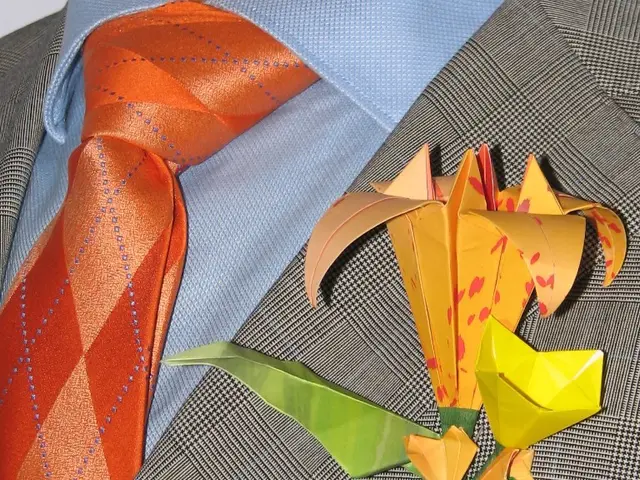Strategies for Fastening Landscape Fabric with Staples to Prevent Movement and Tearing
Landscape fabric isn't just a pretty face – it's here to help you fight weeds and conserve soil efficiently. Yet, many DIYers face the same issue - the fabric starts to move, tear, or bunch up, making it less effective and leaving your project looking shabby. The secret to a lasting and well-performing landscape fabric setup? Perfect installation and securing anchors. Whether you're using it under mulch, gravel, or raised beds, follow these genius tips to keep your landscape fabric game strong.
Why does landscape fabric fail to stay in place?
Before we get to the good stuff, let's talk about why things go wrong:
- Skimpy anchoring (too few pins)
- Wrong type of anchors for your soil
- Foot traffic or pets bumping things up
- Wind carrying the edges away
- Tension created by growing plants or erosion
- Improper overlaps or cuts weakening the fabric
You've got this, though! With the right tools and a little elbow grease, you can sidestep all these pitfalls.
Step 1: Select a Tough Landscape Fabric
Not all landscape fabric is born equal. Thinner, cheaper materials can wear out quickly. To have the best shot at success, go for ECOgardener landscape fabric designed for all kinds of application (e.g., under gravel paths, garden beds, or decorative mulch).
Tip: Opt for UV-resistant fabrics if the material will bask in the sun for extended periods.
Step 2: Prep the Ground Properly
Clear the spot of debris, sharp stones, and existing weeds, then:
- Level the ground as much as possible to prevent puddling or fabric straining.
- Add a thin layer of sand or topsoil to help create a level surface.
Proper preparation means easier installation and better performance over time.
Step 3: Lay the Fabric with Overlaps
Unroll the fabric and position it so the edges overlap by at least 6 to 12 inches where two pieces meet to prevent weed invasion through seams. Ensure the fabric lies flat and taut across the surface. Use a utility knife or scissors to make precise, clean cuts for plant holes or edges.
Watch out for jagged or loose cuts – they can spread and lead to tears.
Step 4: Use the Right Anchors – And Use Plenty!
One common blunder is under-securing the fabric. You'll want to use landscape staples, specially-designed garden pegs, or stakes suited for your soil type:
- U-shaped landscape staples (6′′ to 8′′) for loose or sandy soil
- Flat-top pins or spiral pegs for a firm grip in clay or compacted soil
Anchor Tips:
- Place anchors every 12 to 18 inches along edges and seams.
- In windy spots, reduce spacing to every 6-12 inches.
- Put extra pins around corners, near plant holes, and in high-traffic areas.
- Drive anchors in at a 45-degree angle for better holding power.
Step 5: Secure the Edges
Don't let exposed edges go unattended – this is where trouble starts most often.
Ideas to secure edges:**
- Bury them under 2-3 inches of soil or mulch
- Use bricks, stones, or edging material along the perimeter
- Fold the edges under themselves for extra weight and reinforcing
This not only keeps the fabric down but also adds to the overall aesthetic.
Step 6: Cover with Mulch or Gravel
While landscape fabric helps suppress weeds, it doesn't fare well under constant sunlight. Protect it from the sun's rays:
- Use 2-3 inches of organic mulch, like bark, straw, or wood chips
- Spread 1-2 inches of decorative stone, gravel, or crushed rock
Remember, don't pile mulch against plant stems as this can lead to rot or pests.
Optional: Reinforce with Staples Over Time
After a few weeks, inspect the fabric. If you notice lifting, bubbles, or shifted mulch/gravel due to rain or newly added planting holes, add more staples to prolong the lifespan of your landscape fabric installation.
Common Mistakes to Avoid
- Skipping ground prep: Uneven surfaces can cause the fabric to tear under pressure.
- Not enough staples: One staple every 3-4 feet isn't enough!
- Choosing the wrong staple type: U-shaped pins don't work well in hard, dry clay.
- Exposing edges: Wind and rain can easily undo your hard work.
- Leaving the fabric uncovered: Sunlight ruins it faster than you'd think!
Use ECOgardener Landscape Staples for Seamless Security
When securely anchored, landscape fabric teams up with you against weeds and soil erosion. To achieve this, focus on anchoring it properly, covering it sufficiently, and selecting materials tailored to your requirements. Following the steps above will keep your landscape looking polished and save you from future woes.
Ready to start? Whether you're planning flower beds, vegetable patches, or gravel pathways, investing a bit more time upfront ensures your landscape fabric stays secure and performs well for seasons to come.
Landscape fabric can fail to stay in place due to skimpy anchoring, wrong type of anchors for the soil, foot traffic or pets bumping things up, wind carrying the edges away, tension created by growing plants or erosion, improper overlaps or cuts weakening the fabric, or leaving exposed edges unattended. To prevent these issues and secure a lasting and well-performing landscape fabric setup, choose a tough landscape fabric like ECOgardener landscape fabric, prepare the ground properly, lay the fabric with overlaps, use the right anchors and use plenty, secure the edges, and cover with mulch or gravel.








